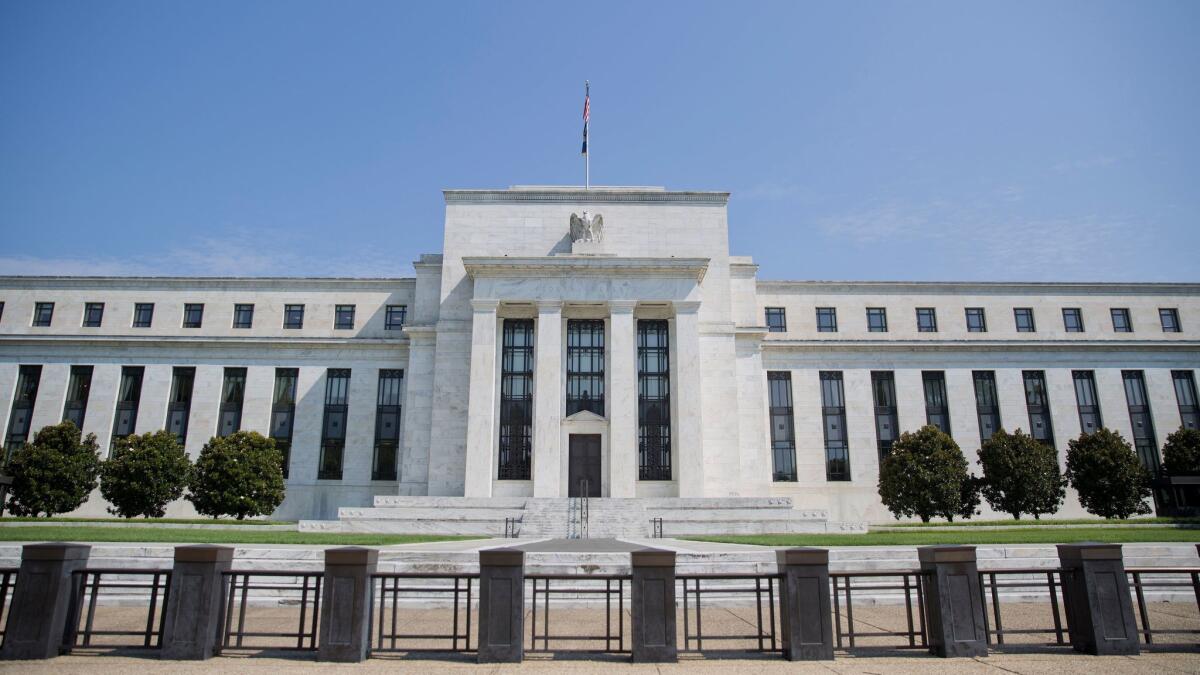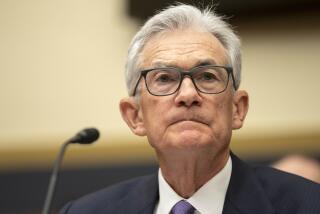Fed minutes show split on timing of asset reduction

Several Federal Reserve monetary policymakers wanted to announce last month exactly when they would start reducing the central bank’s trillions of dollars in assets, but most preferred to wait to see how the economy and financial markets were doing over the summer, according to an account of the meeting released Wednesday.
In the formal statement after the July 25-26 meeting, the Federal Open Market Committee said the scale-back of the Fed’s $4.5-trillion balance sheet would happen “relatively soon.”
Analysts have expected Fed officials to start the reductions when they next meet in September.
But the minutes of the July meeting, released with the usual three-week lag, indicated that Fed policymakers “expressed concern about the recent decline in inflation.” That development could lead them to hold off on the balance-sheet reduction as well as future hikes in a key interest rate.
Fed officials are trying to return to a more normal monetary policy after years of rock-bottom interest rates and a dramatic expansion of Fed assets that were designed to stimulate the economy during and after the Great Recession.
Most Fed policymakers saw the outlook for the economy and the labor market “little changed” in July from their earlier projections, which included inflation rising to the central bank’s 2% annual target over the next couple of years, the minutes showed.
That would put Fed officials on target for another small increase in their benchmark short-term interest rate before the end of the year.
In June, Fed policymakers voted 8 to 1 to increase the rate by 0.25 percentage point, the third such increase in six months. The rate now is between 1% and 1.25%.
But Fed officials continue to be worried that inflation remains too low, according to the meeting minutes. For the 12 months ended June 30, the most recent data available, the Fed’s preferred inflation measure was 1.4%.
Fed Chairwoman Janet L. Yellen has attributed the recent slowdown in inflation mostly to temporary factors, such as lower costs for cellphone plans.
Many Fed policymakers at the July meeting agreed, but said inflation “would likely continue to be held down over the second half of the year by the effects of those factors,” according to the minutes.
Given the low inflation, some officials said the Fed “could afford to be patient” on future interest rate hikes. But some others were worried that without additional hikes, inflation might accelerate above the Fed’s target as the jobs market continued to improve.
A reduction in the Fed’s assets — mostly U.S. Treasury and mortgage-backed securities — is expected to help push up mortgage and other longer-term interest rates.
The bond purchases caused the amount of assets on the Fed’s balance sheet to more than quadruple since 2008. The Fed stopped buying bonds in 2014 but the size of its holdings has remained roughly the same because the money from maturing securities has been reinvested in new ones.
The Fed is planning to slowly decrease the size of its holdings by allowing some of the proceeds from maturing bonds to be cashed out instead of reinvested.
Twitter: @JimPuzzanghera
ALSO
After CEO exodus, Trump ends two advisory councils
Protests against Google are postponed as culture wars roil Silicon Valley
Wells Fargo chairman, two directors to step down amid continuing fallout from sham accounts scandal







